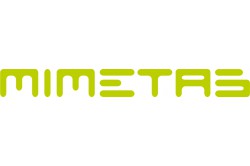A Microfluidic 3D Endothelium-on-a-Chip Model to Study Transendothelial Migration of T Cells in Health and Disease
August 02, 2021

Leiden, August 2, 2021 - Scientists from MIMETAS and Merck introduce an assay to study 3D T cell dynamics under flow and in real-time using a high-throughput, artificial membrane-free microfluidic platform. The research has just been published in the International Journal of Molecular Sciences.
The immune system is a complex network of biological processes that protects us from diseases. It consists of various cell types with immensely diverse and highly specific receptors to recognize potential threats. An important step in the immunological cascade in both health and disease is the recruitment of T cells. These T cells traverse the body through blood vessels of the circulatory system and are recruited by several factors.
To study the detailed molecular and biophysical mechanisms related to T cell migration mouse models are often used. However, their biology does not always translate to humans and on top of that mouse models cost a lot of time and money and are ethically debatable. In vitro cell culture models do not recapitulate complex human biology, due to the lack of vasculature, extracellular matrix, and neighboring cells.
In this publication, an assay to study 3D T cell dynamics under flow in real-time using a high-throughput, artificial membrane‐free microfluidic platform that allows unimpeded extravasation of T cells is described. It is shown that primary human T cells adhere to endothelial vessel walls upon perfusion of microvessels and can be stimulated to undergo transendothelial migration. The assay is unique in its comprehensiveness for modeling T cell trafficking, arrest, extravasation, and migration, all in one system, combined with its throughput, quality of imaging, and ease of use. We envision routine use of this assay to study immunological processes and expect it to spur research in the fields of immunological disorders, immuno‐oncology, and the development of novel immunotherapeutics.

